#changethecover
Text
Had a great discussion with Mercoffdaperc, we went over much of the history of GamerGate in detail. We also discuss the more recent Sweet Baby Inc controversy and the ALT+F4 conference. Details over what we go over below!
We discussed Doritosgate, the Cole Nasrallah and Zoe Quinn incident, the Wizardchan incident, online harassment, The Zoe Post , ethics in games journalism, the burgersandfries IRC channel run by Thidran, Gamers Are Dead articles, GameJournoPros, Brianna Wu's involvement with #GamerGate, DeepFreeze, ChangeTheCover & SaveTheCover, the Pillars of Eternity tombstone controversy and the Lionhead Studios cleavage day controversy.
Plus SPJ Airplay with Ashe Short, Cathy Young, Christina Hoff, Michael Koretzky, Ren LaForme, Derek Smart and @libertarianblue. Plus SavePoint at SXSW with @pixelmetalgames, my panels at Arch Anime and Natsucon. The cancellation of my panel at ArchonSTL, the Honey Badgers being banned from @calgaryexpo.
Plus CometCon canceling the debate with Kukuruyo and our thoughts on Brian Martinez's position. Progressive Victory, including Counterpoints and WhickTV embracing disclosure and greater transparency. The ZachAttack incident involving Mombot. My 2018 GamerGate debate in Saint Louis.
We also discussed Vivian James, GamerGate meetups, @timsoret being unfairly attacked, the Alec Holowka incident, the Sweet Baby Inc controversy, Kabrutus misrepresenting Yiyi Zhang's video, how Destiny inspiring me to become a streamer, the Bianca Devon incident, the allegations that Adin Ross's community engaged in harassment against Destiny. Plus the upcoming ALT+F4 conference hosted by LTU.
Watch here: https://youtube.com/watch?v=s0TFuo7m31Y
#gamergate#gamergatebook#sweet baby inc#gamergate 2#alt+f4 conference#zachattack#gaming#books#journalism#history#mercoffdaperc#kabrutus#yiyi zhang#calgary expo#gaming history#internet history#games journalism#ethics#spj airplay#cole nasrallah#tim soret#adin ross#destiny#destinygg#pillars of eternity#changethecover#savethecover#alec holowka#zoe quinn#brianna wu
0 notes
Text
(Repost) How The Killing Joke ruined Batgirl

Note: This article was originally posted March 20th, 2015 on the Agony Booth, which I used to write for. Since that site is sadly no longer with us, I’m reposting my old articles here.
Alan Moore’s iconic graphic novel The Killing Joke is probably his most controversial work to date, and that’s saying something. It’s a great read, with some fantastic artwork that continues to influence and inspire the Batman franchise to this day. But along with the praise, over the years it’s attracted quite a bit of criticism from many sources (including its own author) for its callous maiming of the character of Barbara Gordon. The Killing Joke is one of comics’ most famous examples of “women in refrigerators”, a decade before the term was even coined.
The subject of The Killing Joke has again been raised recently by a controversial variant cover for Batgirl #41, which features the Joker menacing a petrified looking Batgirl while smearing a smile of what is presumably blood on her face. It was created, without the input or consent of the actual comic’s creative team, mind you, to help celebrate the 75th anniversary of the Joker’s first published appearance in 1940’s Batman #1.
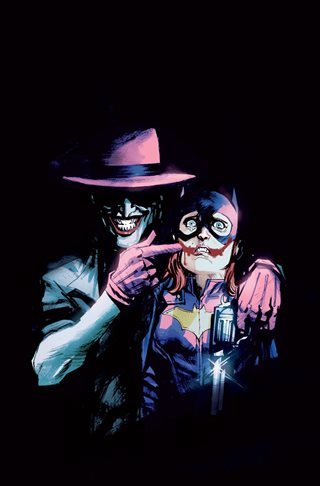
The cover drew immediate criticism, spawning the twitter hashtag #CHANGETHECOVER, and as of now, DC has officially pulled it, and will not be including it as one of the final published covers of the comic. Beyond the misogynistic undertones it conveys, the cover just plain doesn’t fit with the tone of the comic itself, which has been leaning in a much more fun, lighthearted direction under its new creative team, who all protested the cover immediately. Unfortunately, this wasn’t in time to stop a small army of angry readers online from making the cover’s cancellation their new pet cause, raising it up as a martyr to “self-censorship”.
I shouldn’t even have to explain this, but “self-censorship” is an oxymoron and doesn’t exist. You cannot, by definition, censor yourself, as censorship is something imposed on you by an outside party (such as, but not always, the government). A privately-owned company commissioning a work of art and then choosing not to sell it is called self-control.
On its own, the cover may seem relatively harmless. There’s certainly nothing wrong with celebrating the character of the Joker. He’s arguably the most popular character DC has right now, even more so than Batman. And the fact that they chose to reference The Killing Joke isn’t surprising—it’s probably the most famous Joker story ever written. However, while it may seem harmless out of context, in context, it comes across as rather disturbing.
When Alan Moore first made the decision to have the Joker cripple and sexually humiliate Barbara Gordon, DC was rather alarmingly unconcerned about it. You’d think they would be hesitant to take a character who was mainly known for being the colorful, fun sidekick created for the ‘60s TV show and do something that dark and mean-spirited to her. Instead, Moore’s editor Len Wein famously responded, “Yeah, okay, cripple the bitch.” Moore has made no secret of his regret over ever writing the scene and wishing in retrospect that they had said no.
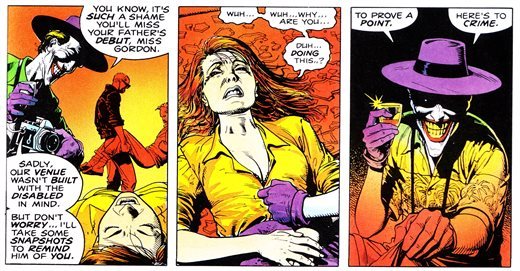
Fortunately, the character of Barbara Gordon did not end with The Killing Joke. Despite being paralyzed from the waist down, she returned to crime-fighting under the identity of “Oracle”, a secretive master hacker who provides tech support and intel to other heroes in the DC universe. In this capacity, she became a popular and important hero in her own right, free from Batman’s shadow, and even formed and led her own superhero team, the Birds of Prey.

Barbara continued on as Oracle for a few decades. Then came the New 52. When DC decided to reboot their entire universe of characters, they decided to make Barbara Gordon into Batgirl once more, bringing her back to her more iconic roots. That’s not a bad idea in theory. I enjoy the young, spunky, purple-suited Batgirl just as much as I like her as mysterious, badass Oracle.
However, they made a horrible miscalculation when they elected to keep The Killing Joke as part of her new continuity. She still got shot, molested, and possibly raped by the Joker; she just wasn’t crippled afterwards, and continued being Batgirl.
It’s understandable that DC wouldn’t want to write one of their most popular stories out of continuity (even though they had no problem writing out Alan Moore’s actual best DC story, “For the Man Who Has Everything”, thirty years ago during Crisis on Infinite Earths). However, keeping Killing Joke in continuity while removing Barbara’s rebirth as Oracle* trivializes the entire event as a part of her character. The idea that she could just bounce back like it never happened, without being profoundly changed by the experience, is at best childish and simpleminded.
[*By the way, I read somewhere that her history as Oracle is still supposed to be in continuity, but since she’s essentially back to square one regardless of what came in between, it hardly matters.]
That’s not to say Barbara isn’t still affected by The Killing Joke; quite the opposite. I only read the first few issues, but in those stories, New 52 Batgirl couldn’t stop talking about how not-over-it she was. Barbara was constantly suffering from PTSD, cowering at anything that even reminded her of the Joker. It’s a rather infantilizing step back from the Barbara who remade herself stronger than ever as Oracle.

Plus, on a personal note, the major appeal of Barbara as Batgirl, to me, was that she was the only Batman sidekick that wasn’t defined or motivated by some past tragedy. She became Batgirl because she wanted to, not because some random criminal killed her parents. Now she’s just as messed up as the rest of them.
By continually focusing on the lowest point in Barbara’s history, DC is refusing to let her move on, forever keeping her the scared little victim. They’re defining her by The Killing Joke, and The Killing Joke isn’t even her story. She has almost no dialogue in that comic, and her only role is to be maimed and degraded in order to traumatize her father, Commissioner Gordon.
Likewise, this cover is also not about Batgirl, not really, despite being a cover for her comic. It’s intended to be a celebration of the Joker. And choosing such a horrifying image as a celebration is in incredibly poor taste. It comes across as a glorification of Batgirl’s humiliation and degradation. It’s not like they couldn’t have given her a more empowering or even fun Joker-themed cover: The variant cover for Action Comics features Superman threatening the Clown Prince of Crime with heat vision. The Catwoman cover shows a Catwoman-branded giant boxing glove punching the Joker out. Even the covers that do show the Joker seemingly triumphant don’t show the heroes in such a infantilized, compromising position.
Defenders of the Batgirl variant cover are quick to point out that Batgirl is far from the Joker’s only famous victim, and there are plenty of times comics show male heroes in moments of defeat or weakness. This is true, but it’s almost never done this way. Male heroes, even in defeat, are almost always drawn to still look defiant and “cool”, keeping their dignity intact. You’d never see the same image with Batman in Batgirl’s place, with that same teary-eyed look of childlike horror. Case in point: the image below, with the Joker and Batgirl replaced by Doomsday and Superman:

This parody drawing by comic artist Ray Dillon perfectly illustrates the comics industry’s double standard. Male heroes are never allowed to seem this weak. The same image with a male hero instead of a female hero becomes laughably comical. Even if it weren’t, it still wouldn’t have the same impact, because The Death of Superman was nothing like The Killing Joke. Superman wasn’t fridged in one scene halfway through to further some other character’s story, and he wasn’t humiliated or violated. He was the central character, and he went out it a bloody blaze of glory, and took his assailant with him to the grave.
For a better example, let’s look at the Joker’s other most famous victim: Jason Todd, the second Robin. Famously beaten to death with a crowbar by the Joker in the storyline A Death in the Family, Jason eventually returned from the dead. Despite having arguably more reason than Barbara to fear the Joker and experience PTSD over his encounter, there mysteriously seems to be little in the way of art or storylines to that effect. Nothing comparable to this variant cover featuring Jason Todd with the Joker exists, that I’ve seen.
Jason Todd’s post-resurrection stories haven’t been about fear: they’ve been about anger. Jason’s been out for revenge ever since he rose from the dead. His stories are all about how badass and vengeful he is now. He doesn’t cower in fear every time someone pulls out a crowbar—he turned around and beat the Joker half to death with a crowbar. (Not that I want to see Batgirl shoot the Joker through the spine, but at least it’d be better than having her live in constant fear.)
And even putting that aside, Jason didn’t get nearly the short end of the stick in A Death in the Family that Barbara did in The Killing Joke. Once again, Death in the Family was Jason’s story. He had agency, and his actions drove the plot. Even in his final moments, he had more control than Barbara did, with his last act being throwing his body in the way of an explosion in a futile attempt to save his mom.
Showing a female character as scared or victimized doesn’t have to be a bad thing. For example, there’s one comic book all about a woman being brutalized by the Joker that I absolutely love and would have no problem with DC revisiting: Paul Dini’s Mad Love. Why? Because Mad Love is 100% Harley Quinn’s story. She drives the plot, she has the arc. And her victimization isn’t just there for its own sake, or for the sake of Batman or the Joker; it informs her character and the story and it teaches something. That’s the difference between the Joker defenestrating Harley and crippling Barbara. One is all about the victim, while the other is all about the victimizer.
3 notes
·
View notes
Photo
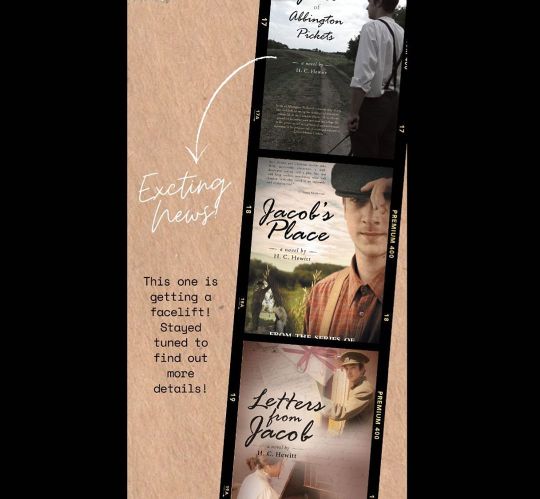
Guess what????? Something new is happening!!! I can’t to share with you all the details but here’s a little hint: this book is getting a facelift!!! ❤️❤️❤️Stay tuned!! #jacobofabbingtonpickets #facelift #abbingtonpicketsseries #bookcover #newcover #cover #changethecover #quilterbydayauthorbynight #christian #historical https://www.instagram.com/p/CEne9-TAHKb/?igshid=etropc62wv1r
#jacobofabbingtonpickets#facelift#abbingtonpicketsseries#bookcover#newcover#cover#changethecover#quilterbydayauthorbynight#christian#historical
0 notes
Text
tbh, the freakout about Hydra!Steve Rogers reminds me of the Batgirl #41 variant cover controversy
not in the ‘this doesn’t deserve the controversy it’s creating’ way like the Batgirl cover (because it does; believe me, I’m outraged as any of you at this whole nonsense), but more in the ‘people who don’t read comics, don’t know comics history, don’t understand how comics work, and don’t understand that it is absolutely vital to get CONTEXT are freaking out and inserting their uninformed opinions into the fray’ way
14 notes
·
View notes
Photo
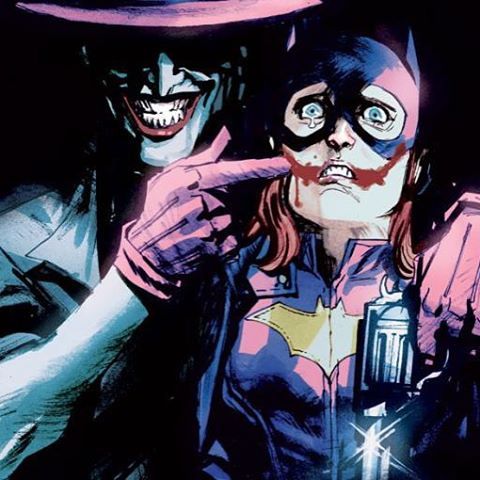
The issue in society today is that we have fought so hard to speak, yet we silence ourselves by filters like #GamerGate or #ChangetheCover !
0 notes
Video
youtube
Cheshire Cat Studios returns with an amazing video on the #CHANGETHECOVER controversy and the authoritarian left! Watch it today!
20 notes
·
View notes
Text
Finally, Female Allies to Stop Feminist Censorship (A response to Cathy Young)
Finally, Female Allies to Stop Feminist Censorship (A response to Cathy Young)
You have no idea how refreshing it is to hear more and more female voices making themselves heard telling their fellow women who are part of the SJW perpetual-butthurt machine to cool their jets and be reasonable. Naturally, they don’t take the same confrontational angle that people like myself do, but I’ll take what good news I can get. And it appears in Timemagazine. That is just awesome! …
View On WordPress
0 notes
Text
bertmacklin-spartoi yeah I figure it's because of all the #comicgate #killingjoke #savethecovers women hating death threats sending shitbags I interacted with last week. 80's movies are so full of shit there's nothing nice about basement dwelling straight white conservative boys they just gross af I need a shower.
0 notes
Photo

SETTING THE (DOUBLE) STANDARD: WHY PULLING THE ‘BATGIRL’ #40 VARIANT IS BAD FOR COMICS
182 notes
·
View notes
Photo
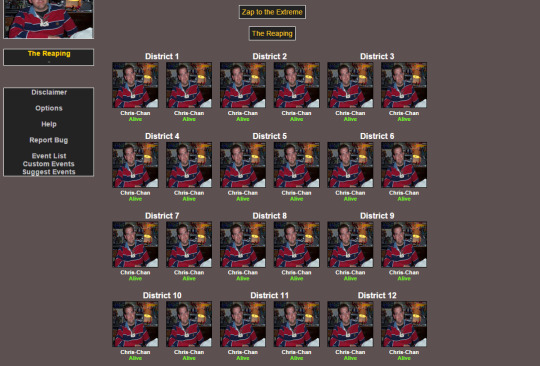
Let the games begin
3 notes
·
View notes
Link
“Ladies and gentlemen, you’ve read about it in the newspapers. Now, shudder as you observe before your very eyes that most rare and tragic of nature’s mistakes – the average man. Physically unremarkable, it has instead a deformed set of values. Notice, the hideously bloated sense of self-importance. The club-footed social conscience and withered optimism…” This misanthropic line is delivered by The Joker in Alan Moore’s 1988 graphic novel, The Killing Joke. Widely regarded as one of Moore’s crowning achievements, it is one of the darkest contributions to the Batman series, displaying The Joker engaged in hitherto-unprecedented acts of sadism. Indeed, it was The Killing Joke that was handed to Heath Ledger as a reference point for his own magnificently deranged interpretation of The Joker in The Dark Knight (2008). So it was unsurprising that DC comics would ask artist Rafael Albuquerque to make his homage to The Killing Joke as disturbing as possible. What was surprising – at least to those fortunate souls who were unfamiliar with words like ‘trigger warning’ or ‘safe space’ – was the backlash he received. Kicked off by a Tumblr post, a horde of offendatrons descended onto social media to demand that DC comics “#changethecover”. Their grievances were many. They argued that the allusion to The Killing Joke, in which Batgirl is shot and crippled by The Joker, is at odds with the current happy-go-lucky incarnation of Batgirl. They claimed that no male character would ever be placed in a similar state of victimisation. They claimed it glamourised sexual assault. This probably makes you, like the Joker, feel a little misanthropic. But don’t worry. Reddit users quickly got to work dismantling these arguments. The #changethecover hashtag was also quickly co-opted by the sensible majority. As I have written before, the landscape of social media has changed rapidly over the past year. The professionally offended can no longer take it for granted that they will be in the majority. The cover was changed, not because of the will of the fans, who were overwhelmingly opposed to the confected outrage, but because Alburqueue himself requested that the cover be pulled. It’s a shame that an artist could be so easily cowed by a little bit of moral panic, but I suppose not everyone can be a Moore or a Tarantino. Indeed, there was a time when the entire comic books industry decided to censor itself over a moral panic. In the 1950s, following an enormous boom in the industry, comic books came under sustained attack by the left-wing psychiatrist Fredric Wertham. His 1954 book The Seduction of the Innocent claimed that comics with themes of violence and criminality were leading to an upsurge in juvenile delinquency. His book sparked a panic among America’s middle classes which saw thousands of comics bought up and burned by concerned parents. A congressional inquiry into immoral themes in comic books soon followed. After years of pressure, the comic book industry opted for a course of action that would doom it to decades of mediocrity. Its leading publishers created the Comics Code Authority, demanding that all its artists adhere to a stifling set of standards. (Here’s a fun game: see if you can spot anything in the Code that would appeal to today’s outraged activists.) Crimes shall never be presented in such a way as to create sympathy for the criminal, to promote distrust of the forces of law and justice, or to inspire others with a desire to imitate criminals. If crime is depicted it shall be as a sordid and unpleasant activity. Policemen, judges, government officials, and respected institutions shall never be presented in such a way as to create disrespect for established authority. Criminals shall not be presented so as to be rendered glamorous or to occupy a position which creates a desire for emulation. In every instance good shall triumph over evil and the criminal punished for his misdeeds. Scenes of excessive violence shall be prohibited. Scenes of brutal torture, excessive and unnecessary knife and gunplay, physical agony, gory and gruesome crime shall be eliminated. No comic magazine shall use the words “horror” or “terror” in its title. All scenes of horror, excessive bloodshed, gory or gruesome crimes, depravity, lust, sadism, masochism shall not be permitted. All lurid, unsavory, gruesome illustrations shall be eliminated. Inclusion of stories dealing with evil shall be used or shall be published only where the intent is to illustrate a moral issue and in no case shall evil be presented alluringly, nor so as to injure the sensibilities of the reader. Scenes dealing with, or instruments associated with walking dead, torture, vampires and vampirism, ghouls, cannibalism, and werewolfism are prohibited. Profanity, obscenity, smut, vulgarity, or words or symbols which have acquired undesirable meanings are forbidden. Nudity in any form is prohibited, as is indecent or undue exposure. Suggestive and salacious illustration or suggestive posture is unacceptable. Females shall be drawn realistically without exaggeration of any physical qualities. Illicit sex relations are neither to be hinted at nor portrayed. Rape scenes as well as sexual abnormalities are unacceptable. Seduction and rape shall never be shown or suggested. Sex perversion or any inference to same is strictly forbidden. Nudity with meretricious purpose and salacious postures shall not be permitted in the advertising of any product; clothed figures shall never be presented in such a way as to be offensive or contrary to good taste or morals The Killing Joke celebrated how far the comic industry had come from the days of the code. “Gruesome illustrations” are on virtually every panel. Despite being more sadistic and evil than ever, The Joker was also humanised via a new back story – a big no-no under the Comics Code. There is also ample nudity and suggested sexual violence. At one point, a captured Commissioner Gordon is stripped naked and is pulled through an abandoned fairground on a leash by semi-naked dwarves dressed in BDSM outfits. Incidentally, that last example highlights the fact that many of DC’s critics are plainly unfamiliar with the material they are criticizing. Their claim that male characters would never be made helpless, or placed in a situation of sexual humiliation, is disproven in The Killing Joke itself. Critics of the variant cover claim that it is out of whack with the current incarnation of Batgirl. But Batgirl was always an empowered happy-go-lucky character. That’s precisely why her helplessness at the hands of The Joker made such an impact with readers. Like the death of Aerith in Final Fantasy VII, or Lee Scoresby in The Subtle Knife, it is always the loss of likeable characters that hits hardest. Almost every cultural product that depicts violence against women has been the subject of a social media panic in recent years. Grand Theft Auto, Mortal Kombat, Game of Thrones and even Minecraft have had to deal with backlashes for allowing female characters to face similar levels of violence to male characters. This neo-chivalry is almost worse than the morality police of the 1950s. At least back then they were egalitarian enough to avoid restricting their concerns about violence to one sex. Nevertheless, the objections to Alburqueue come from the same gut reactions against “nastiness” that fuelled the panic of the 1950s. Today, the left-wing language of “trigger warnings,” “safe spaces” and “empowerment” has become a vehicle for the old values of the Comics Code. The fragile, easily-traumatised audience must be protected from disturbing content, goes the thinking. Superheroines must always win: “empowered” characters can never be shot, or hurt, or victimised in any way. And, naturally, sexuality and nudity is once again a target and must be stamped out. The parallels between the new puritans and the old has not been lost on comic book fans. A new Reddit community to monitor the reemergence of moral panic is aptly named WerthamInAction, after the old 1950s crusader. Comic book artists themselves are also beginning to realise the danger, with some beginning to rally around Danger Girl creator J. Scott Campbell. They have an uphill struggle ahead of them. The resistance to the new culture police is not as organised in the world of comic books as it is in gaming or sci-fi. Artists and fans also face the additional problem of an industry dominated by Marvel and DC, two cautious corporate giants who are terrified of controversy and eager to court the good opinion of fashionable left-wing blogs. Nevertheless, if #changethecover is any guide, the world of comic books is once again facing the threat of cultural vandalism. If artists do not wish to return to the days of kitsch inoffensiveness, they would do well to grow a backbone.
#changethecover#back#art#censorship#offendedness#moral police#policing art#comic books#dark themes#moral panic#aka#moral insanity
1 note
·
View note
Text
I don’t understand this whole controversy about that Batgirl cover.
2 notes
·
View notes
Text
Between #feministsareugly and #changethecover I've had to block and/or report over TWENTY people on Twitter this week. Someone tried figuring out where I live through my Twitter info and pictures. Haven't received any threats (so far...) mostly bogus accusations about me being a Camgirl, rude language, and people making fun of the way of I look. I'm so sick and tired of gamer gate sealion assholes, butthurt fanboys, and trolls. Say #feminismisawful all you like, but the only awful I'm seeing is from the other side. To reiterate: -DC did the right thing by respecting the artist's request and pulling the Batgirl cover -feminists are ugly because they transcend your beauty standards -I don't care if you want to sleep with me because you won't get the opportunity
26 notes
·
View notes